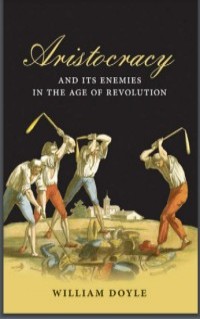
Aristocracy and its Enemies traces the roots of the attack on nobility at this time, looking at intellectual developments over the preceding centuries, in particular the impact of the American Revolution. It traces the steps by which French nobles were disempowered and persecuted, a period during which large numbers fled the country and many perished or were imprisoned.
In the end abolition of the aristocracy proved impossible, and nobles recovered much of their property. Napoleon set out to reconcile the remnants of the old nobility to the consequences of revolution, and created a titled elite of his own. After his fall the restored Bourbons offered renewed recognition to all forms of nobility. But nineteenth century French nobles were a group transformed and traumatized by the revolutionary experience, and they never recovered their old hegemony and privileges. As William Doyle shows, if the revolutionaries failed in their attempt to abolish nobility, they nevertheless began the longer term process of aristocratic decline that has marked the last two centuries.






































